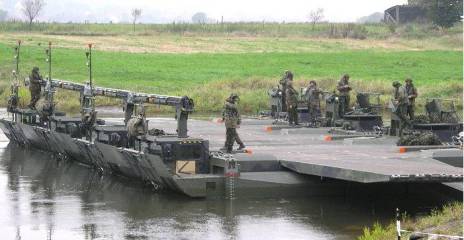M2 Bridging and Ferrying Rig (Land Mode)
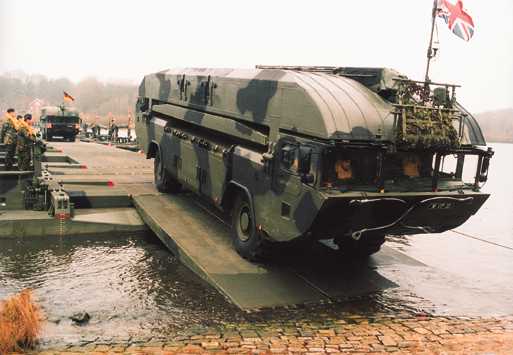
M2 Bridging and Ferrying Rig (Water Mode)
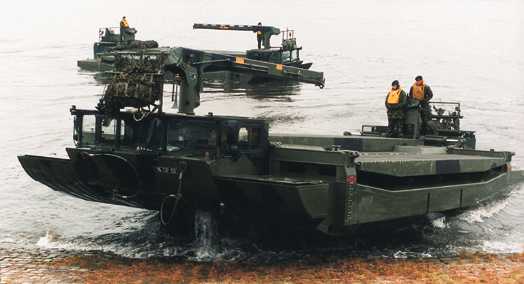
| Weight: | 22,000kg | Length: | 11.35m |
| Height: | 3.7m | Crew: | 4 |
| Width Road: | 3.0m | Width Water: | 5.92m |
| Maximum Road Speed: | 60km/h | Speed Water: | 8kt no payload |
Current operational model is the M2D
The M2 was designed and developed during the mid-1960s and was first delivered to the West German Army in 1968.
The British Army did not receive theirs until 1969. The M2 is produced by Eisenwerke Kaiserslautern (EWK)
& Klockner-Humboldt-Deutz (KHD), both of which produce full vehicles, and the rig manufacturer can be identified
by the badge furthest to the left of the pair mounted below the front cab windows.
M2D under construction at Eisenwerke Kaiserslautern (EWK) factory

The original M2A was a test vehicle only while the M2B went into service with the British Army. The M2B was converted
to the M2D specification which has a Class 70 loading for tracked vehicles to enable the rig to carry Challenger, and
Class 93 for wheeled vehicles. The extra buoyancy is provided by inflatable bags along the sides and modified hydraulics
to cope with the extra weight.
The M2C was never supplied to the British Army, it was a diesel-engined version produced for Singapore.
M2D Pilot Station
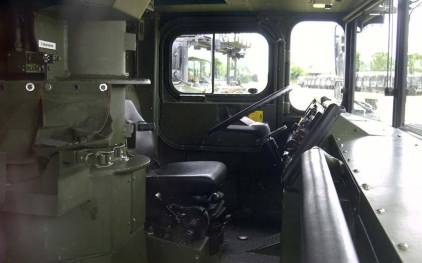
Royal Engineers M2D in service 1988
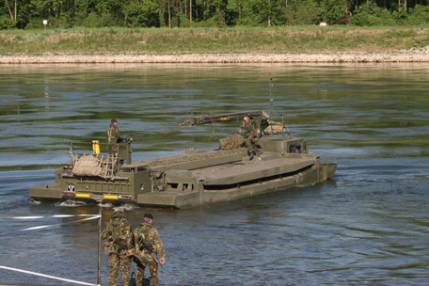
German Army M3 which replaced the M2D
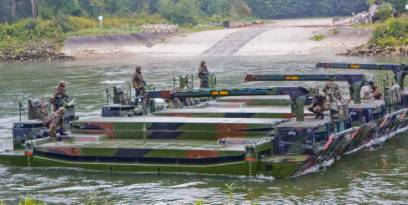
3 German Army M3s linked for light vehicle crossing
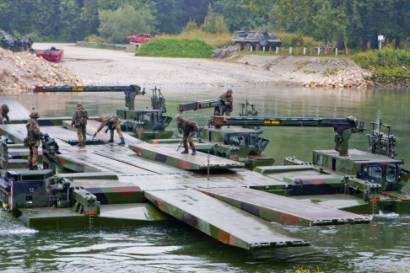
During 1997 the replacement of the M2D, with the improved M3 began, and by March 1999, 38 x M3 rigs had been delivered and 30 of these (including four of seven pre-production vehicles) went to 28 Engineer Regiment in Germany. The unit cost of each M3 Rig was £1.2 million.
Royal Engineers M3s on Exercise
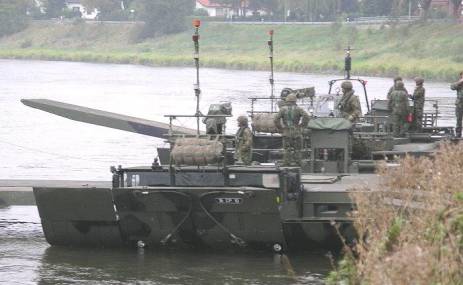
Royal Engineers M3s on Exercise
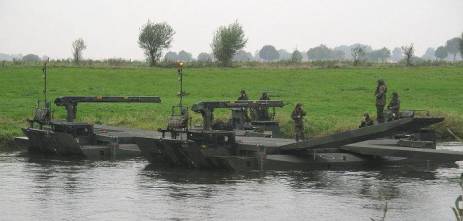
Royal Engineers M3s on Exercise
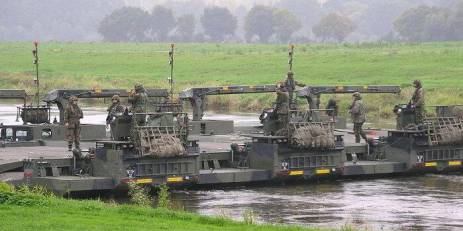
Royal Engineers M3s on Exercise
